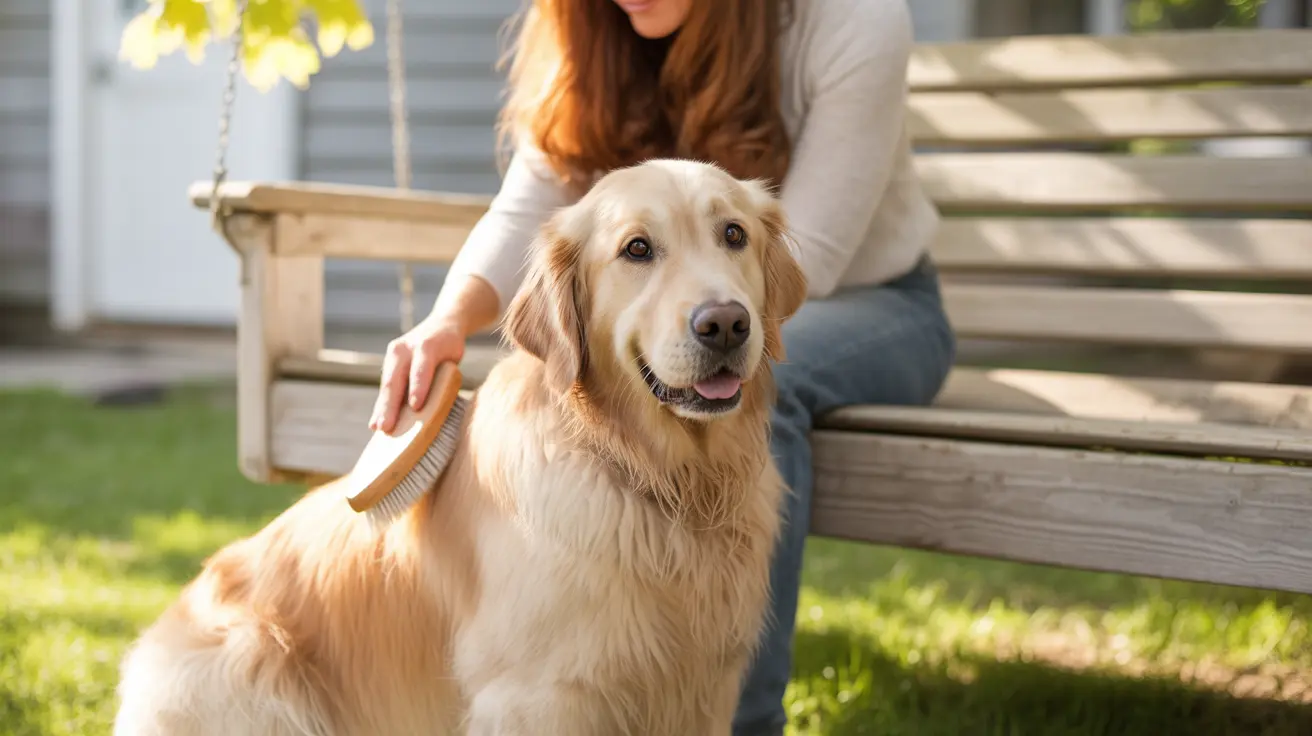Golden Retrievers are beloved family pets known for their stunning double coats and friendly personalities. However, maintaining their signature golden locks requires a dedicated grooming routine. This comprehensive guide will help you understand exactly how often your Golden Retriever should be groomed and what each grooming session should include.
Whether you're a new Golden Retriever owner or looking to optimize your current grooming schedule, understanding the proper frequency and techniques for grooming is essential for keeping your furry friend healthy and comfortable.
Essential Grooming Schedule for Golden Retrievers
The foundation of Golden Retriever grooming lies in establishing a consistent schedule. Your Golden needs regular maintenance across several key areas:
Daily to Weekly Tasks
- Brush coat 3-5 times per week (daily during shedding seasons)
- Check for mats and tangles, especially behind ears and legs
- Inspect paws for debris or injuries
- Monitor skin for any irritation or abnormalities
Monthly Tasks
- Bath using dog-specific shampoo
- Thorough coat inspection and de-matting
- Nail trimming (or more frequently if needed)
- Deep cleaning of ears
Understanding Your Golden's Double Coat
Golden Retrievers possess a distinctive double coat consisting of a water-resistant outer layer and a soft, insulating undercoat. This unique coat structure requires specific care approaches:
The outer coat helps repel water and dirt, while the undercoat provides temperature regulation. During spring and fall, Golden Retrievers experience heavy shedding periods called "blowing coat," when they require daily brushing to manage loose fur.
Professional Grooming Considerations
While regular at-home maintenance is crucial, professional grooming services play an important role in your Golden's care routine:
Professional Services to Consider
- Full grooming every 8-10 weeks
- Specialized de-shedding treatments during seasonal changes
- Professional nail trimming if needed
- Sanitary trimming and paw pad maintenance
Essential Grooming Tools and Techniques
Success in grooming your Golden Retriever depends largely on using the right tools:
Must-Have Tools
- Slicker brush for daily maintenance
- Undercoat rake for shedding seasons
- Metal comb for detangling
- Quality dog shampoo and conditioner
- Professional-grade nail clippers
- Ear cleaning solution
Special Seasonal Considerations
Your Golden's grooming needs change with the seasons:
Spring and Fall
- Increase brushing frequency to daily
- Schedule professional de-shedding treatments
- Pay extra attention to undercoat removal
Summer and Winter
- Maintain regular brushing schedule
- Adjust bathing frequency based on activity level
- Monitor for weather-related skin issues
Frequently Asked Questions
How often should I brush my Golden Retriever to keep their coat healthy and prevent mats?
Brush your Golden Retriever 3-5 times per week, increasing to daily during shedding seasons (spring and fall). Pay special attention to areas prone to matting, such as behind the ears, chest, and legs.
What is the recommended bathing frequency for a Golden Retriever without damaging their double coat?
Bathe your Golden Retriever once every 4-6 weeks, or as needed if they get particularly dirty. Over-bathing can strip natural oils from their coat, so avoid bathing more frequently unless necessary.
How often should I schedule professional grooming sessions for my Golden Retriever?
Schedule professional grooming appointments every 8-10 weeks for optimal maintenance. During heavy shedding seasons, you might want to schedule additional visits for de-shedding treatments.
How frequently should I trim my Golden Retriever's nails and clean their ears to avoid health issues?
Trim nails every 2-4 weeks, or when you hear them clicking on the floor. Clean ears weekly to prevent infection, especially after swimming or bathing.
What special grooming care does a Golden Retriever need during heavy shedding seasons like spring and fall?
During shedding seasons, increase brushing to daily sessions using an undercoat rake or de-shedding tool. Consider professional grooming services for thorough undercoat removal and schedule extra bathing sessions to help loosen dead fur.






